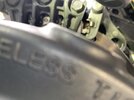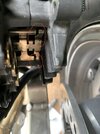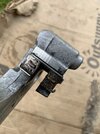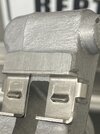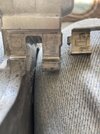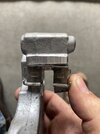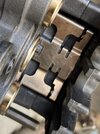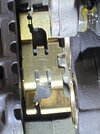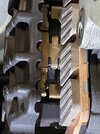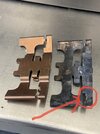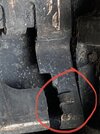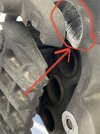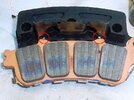Yes the SMC works. I thought I was clear about this. But the old one did too.
The rear wheel spins about a half turn or so. I'll check this again later and post results.
From what your describing, its not at all clear to me.
When I was walking you through the inspection the first time, your SMC failed the function test.
You told me that it did NOT lock the rear wheel, but only slowed it down (failed) and while holding the SMC and applying pressure, you were still able to turn the rear wheel (fail)
Why do you now think that it passed?
Your rear wheel only turning a half turn, is downright screaming that something serious is wrong!
Without clear, honest, and detailed answers, its very difficult for any of us to help you via text messages, phone calls, or watching youtube videos etc.
There are too many things that could cause this for us to try and walk you through it.
You really need to stop throwing money, that you don't have, at solutions to a problem, that you don't know what is.
You really need to take this bike to a shop, or a local mechanic that understands and knows about these bikes.
I know you hate, and don't trust the local shops, but trust me, they probably know a little bit more than you.
I would strongly suggest that you DO NOT attempt to ride the bike, if the rear wheel is only turning a half turn or so, for your safety.
Your rear caliper bracket could be damaged, misaligned, clips bent, your driven bearings could be damaged, your rear wheel could have been assembled in the incorrect sequence, your SMC still may have air in it, your PCV could be the problem, and on, and on, and on.
I don't want to stress you out, but dude, riding a bike with these issues could injure you or someone else.
It may be time to throw in the towel and seek help.
Many folks have explained how the brake system works, and how the seals by design, pull the pistons back away from the rotor, but you either don't want to believe it, or don't fully understand it, as you seem to keep disagreeing with it.
